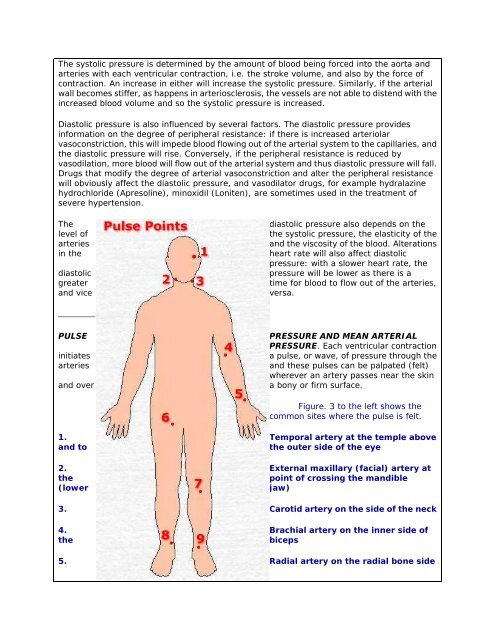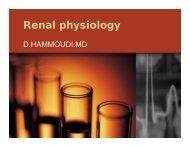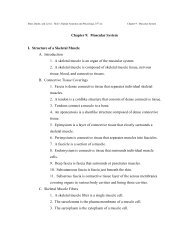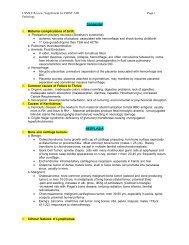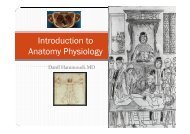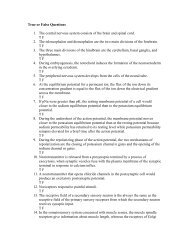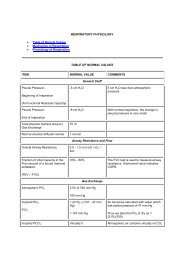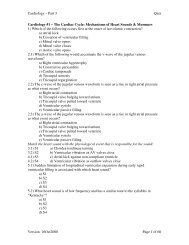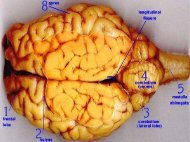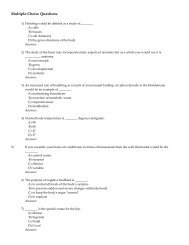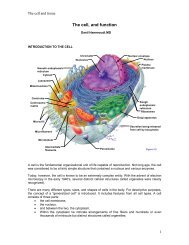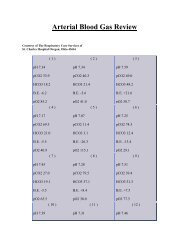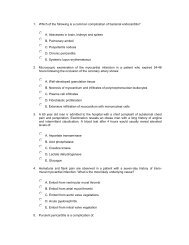Blood Vessels - Sinoe medical homepage.
Blood Vessels - Sinoe medical homepage.
Blood Vessels - Sinoe medical homepage.
Create successful ePaper yourself
Turn your PDF publications into a flip-book with our unique Google optimized e-Paper software.
The systolic pressure is determined by the amount of blood being forced into the aorta andarteries with each ventricular contraction, i.e. the stroke volume, and also by the force ofcontraction. An increase in either will increase the systolic pressure. Similarly, if the arterialwall becomes stiffer, as happens in arteriosclerosis, the vessels are not able to distend with theincreased blood volume and so the systolic pressure is increased.Diastolic pressure is also influenced by several factors. The diastolic pressure providesinformation on the degree of peripheral resistance: if there is increased arteriolarvasoconstriction, this will impede blood flowing out of the arterial system to the capillaries, andthe diastolic pressure will rise. Conversely, if the peripheral resistance is reduced byvasodilation, more blood will flow out of the arterial system and thus diastolic pressure will fall.Drugs that modify the degree of arterial vasoconstriction and alter the peripheral resistancewill obviously affect the diastolic pressure, and vasodilator drugs, for example hydralazinehydrochloride (Apresoline), minoxidil (Loniten), are sometimes used in the treatment ofsevere hypertension.Thelevel ofarteriesin thediastolicgreaterand vicediastolic pressure also depends on thethe systolic pressure, the elasticity of theand the viscosity of the blood. Alterationsheart rate will also affect diastolicpressure: with a slower heart rate, thepressure will be lower as there is atime for blood to flow out of the arteries,versa.PULSEinitiatesarteriesand overPRESSURE AND MEAN ARTERIALPRESSURE. Each ventricular contractiona pulse, or wave, of pressure through theand these pulses can be palpated (felt)wherever an artery passes near the skina bony or firm surface.Figure. 3 to the left shows thecommon sites where the pulse is felt.1. Temporal artery at the temple aboveand tothe outer side of the eye2. External maxillary (facial) artery atthepoint of crossing the mandible(lowerjaw)3. Carotid artery on the side of the neck4. Brachial artery on the inner side ofthebiceps5. Radial artery on the radial bone side


